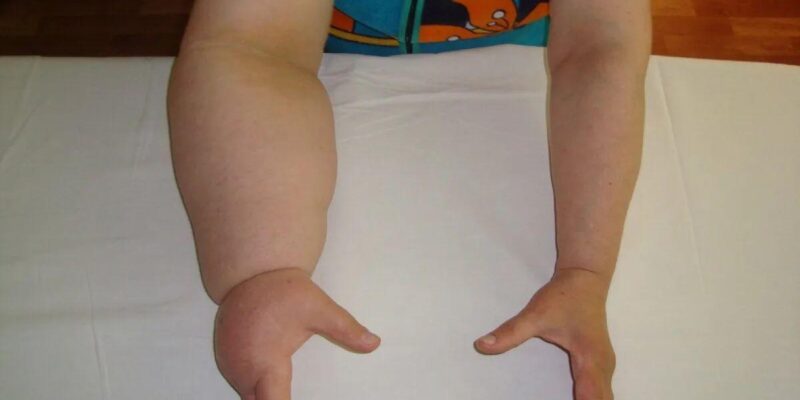Peripheral vascular disease (PVD) and lymphoedema are both vascular-related conditions that can significantly impact a person’s quality of life. While they are different in their causes and manifestations, both disorders affect the vascular system, which is essential for maintaining circulation throughout the body. In this article, we will explore what peripheral vascular disease and lymphoedema are, their symptoms, causes, and treatment options, and how early intervention can make a difference in managing these conditions.
What is Peripheral Vascular Disease?
Peripheral vascular disease (PVD), also known as peripheral artery disease (PAD), refers to a narrowing or blockage of the blood vessels outside the heart and brain. This usually occurs due to the buildup of fatty deposits or plaques in the arteries, leading to reduced blood flow to the limbs, especially the legs. Over time, poor circulation can result in painful and debilitating symptoms, such as leg cramps, numbness, and even ulcers in severe cases.
Symptoms of Peripheral Vascular Disease
The symptoms of PVD can vary depending on the severity of the condition. Early stages may present mild or no symptoms at all, which makes diagnosis challenging. However, common signs include:
-
Pain or cramping in the legs, particularly when walking or exercising
-
Numbness or weakness in the legs or feet
-
Coldness in the lower legs or feet
-
Skin discoloration or sores that do not heal
-
Weak or absent pulse in the legs or feet
If left untreated, PVD can increase the risk of complications such as gangrene or stroke. Early detection and treatment are essential to managing the condition and preventing further damage.
What is Lymphoedema?
Lymphoedema is a condition characterized by swelling, typically in the arms or legs, due to a build-up of lymph fluid. It occurs when the lymphatic system, which is responsible for draining excess fluid from the tissues and returning it to the bloodstream, becomes damaged or compromised. This damage can result from various factors such as surgery, radiation therapy, infection, or genetic conditions.
Symptoms of Lymphoedema
The primary symptom of lymphoedema is swelling in the affected limb, which can progressively worsen over time. Other signs may include:
-
A feeling of heaviness or tightness in the affected limb
-
Restricted movement or discomfort
-
Thickening or hardening of the skin
-
Recurring infections in the swollen area
While lymphoedema is not usually life-threatening, it can be a chronic and disabling condition. It may interfere with daily activities and cause emotional distress, especially if left untreated.
Causes of Peripheral Vascular Disease and Lymphoedema
Both peripheral vascular disease and lymphoedema share certain risk factors but have distinct causes.
Peripheral Vascular Disease Causes:
-
Atherosclerosis (hardening of the arteries) due to high cholesterol, high blood pressure, or smoking
-
Diabetes, which can damage blood vessels over time
-
Obesity and physical inactivity
-
Age, as blood vessels naturally weaken with time
-
Family history of vascular diseases
Lymphoedema Causes:
-
Surgery or radiation treatments that damage lymph nodes or lymphatic vessels
-
Infections or inflammation that disrupt lymphatic drainage
-
Inherited genetic conditions that impair the development of the lymphatic system (primary lymphoedema)
-
Obesity, which can exacerbate fluid retention
Treatment Options for Peripheral Vascular Disease and Lymphoedema
Both conditions can be managed effectively with appropriate treatment, especially when diagnosed early.
Treatment for Peripheral Vascular Disease
The goal of PVD treatment is to improve blood flow and reduce symptoms. Treatment options include:
-
Lifestyle changes: Regular exercise, smoking cessation, and a heart-healthy diet can help improve circulation and prevent further plaque buildup.
-
Medications: Blood thinners, cholesterol-lowering medications, and medications to control blood pressure can reduce the risk of complications.
-
Surgical interventions: In more severe cases, procedures such as angioplasty, stenting, or bypass surgery may be needed to restore blood flow to the affected areas.
-
Endovascular treatments: Minimally invasive procedures, like balloon angioplasty, can open blocked arteries and improve blood circulation.
Treatment for Lymphoedema
Lymphoedema treatment focuses on reducing swelling and preventing complications. Common treatments include:
-
Compression garments: Wearing compression stockings or sleeves can help control swelling by applying gentle pressure to the affected limb.
-
Manual lymphatic drainage (MLD): A specialized massage technique that helps stimulate lymph flow and reduce fluid buildup.
-
Exercise: Gentle exercises can improve lymphatic circulation and prevent the worsening of symptoms.
-
Skin care: Keeping the skin clean and moisturized helps prevent infections and other complications.
-
Surgical options: In severe cases, procedures such as lymph node transplantation or liposuction may be considered.
Prevention and Early Intervention
Both peripheral vascular disease and lymphoedema benefit from early intervention. For PVD, managing risk factors such as cholesterol, blood pressure, and diabetes can prevent or delay the onset of symptoms. Regular checkups with a vascular specialist are crucial for early detection. Similarly, lymphoedema can often be prevented with prompt treatment following surgery or radiation, and by taking proactive steps to maintain a healthy lifestyle.
Conclusion: The Importance of Holistic Care
At SG Vascular Centre, our team of skilled vascular surgeons and healthcare professionals is committed to offering holistic care for patients with vascular conditions such as peripheral vascular disease and lymphoedema. We understand the complexities of these conditions and provide comprehensive treatment options tailored to each patient’s needs. Whether through non-invasive treatments, endovascular procedures, or personalized rehabilitation, our goal is to improve your vascular health and quality of life. If you or someone you know is experiencing symptoms of PVD or lymphoedema, we encourage you to seek professional advice and explore the treatment options available.
By addressing these conditions early and effectively, we can reduce the long-term impact and help you lead a healthier, more active life.
